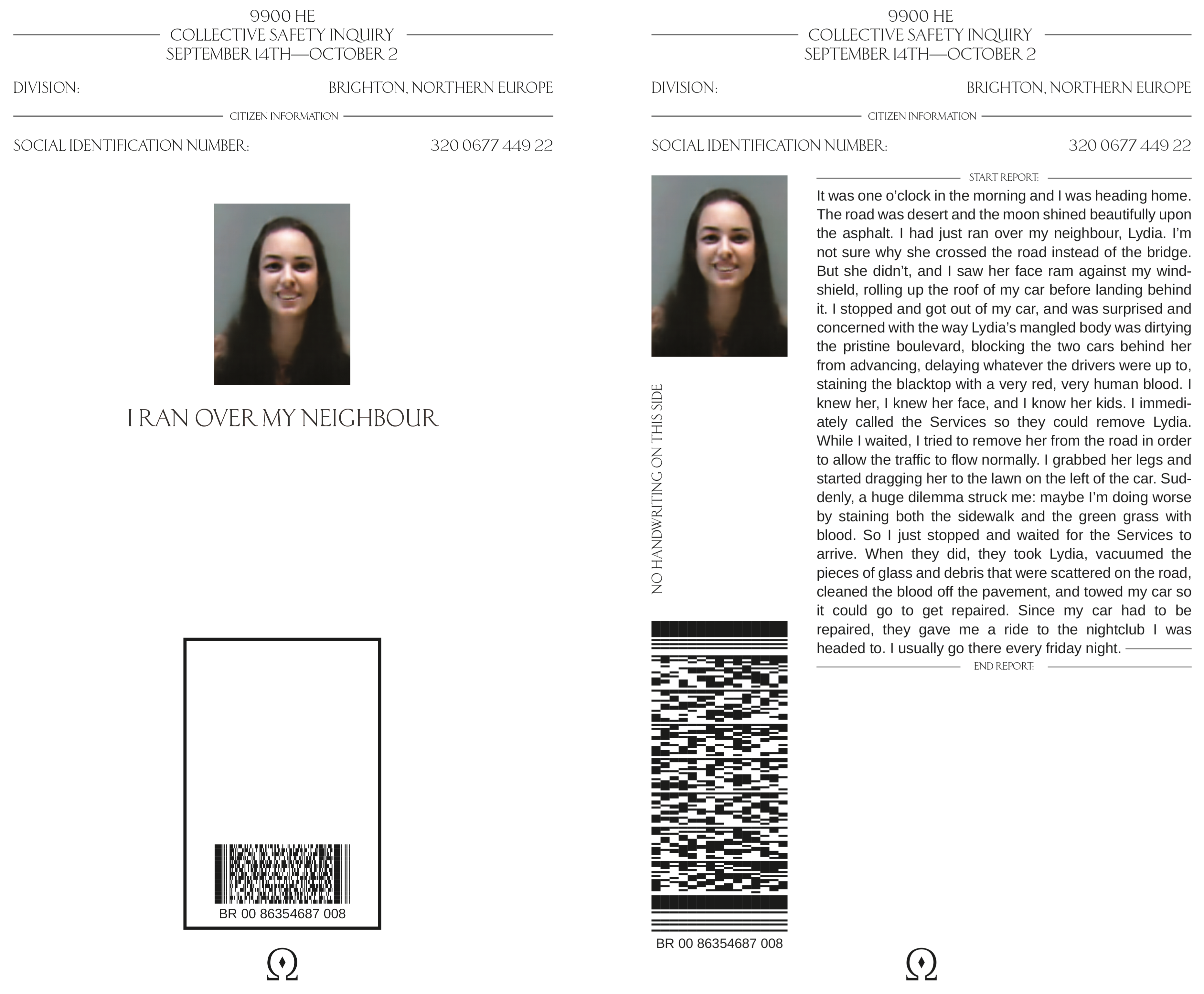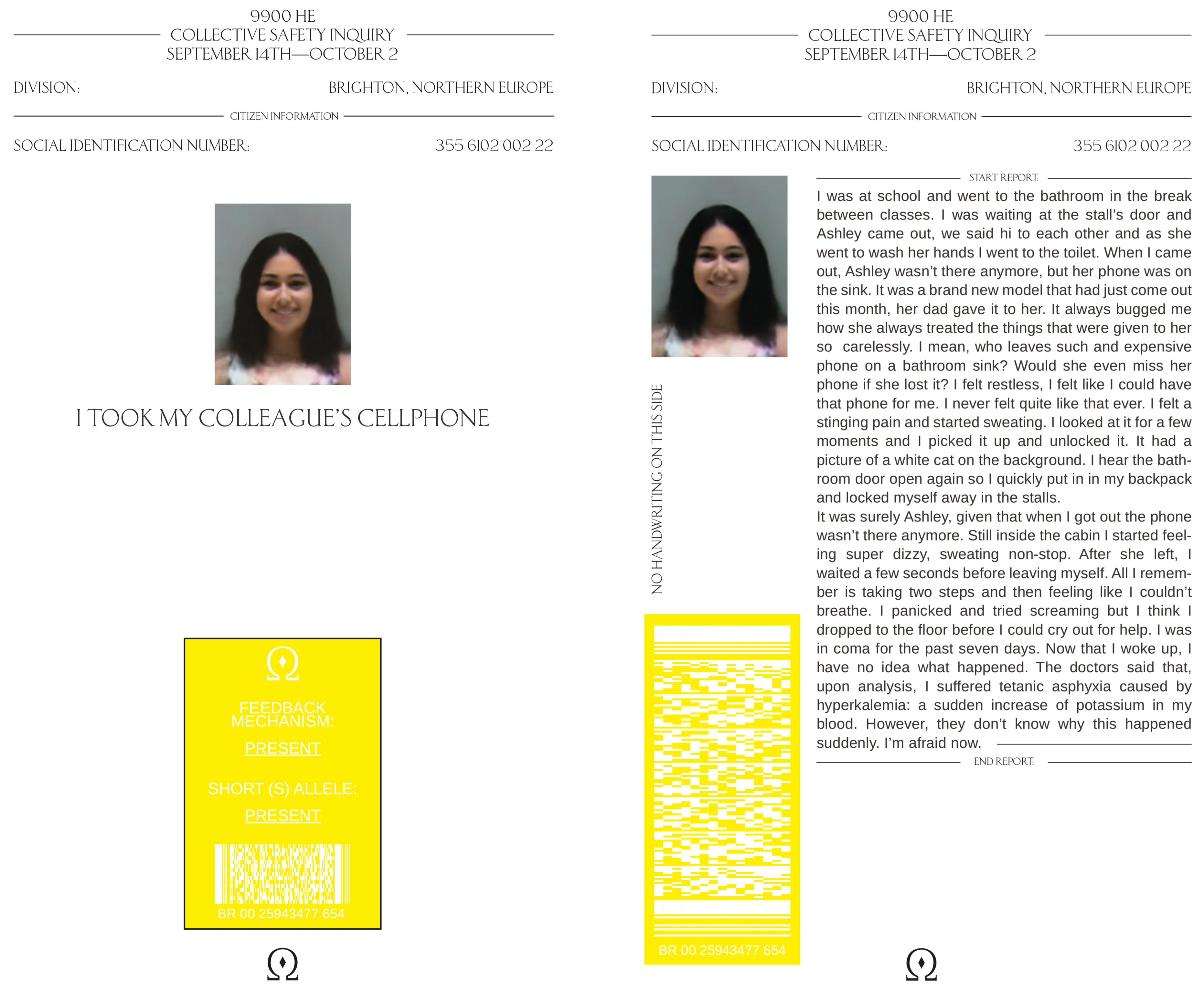
1. HUMANITY EVOLVED TO COLLECTIVIZE THOUGHT
The society of Towards the Omega Point evolved to collectivize thought. There’s no room for individualism here—every single human being thinks about the collective wellbeing at every moment of their lives, never once considering personal desires, needs or individualistic feelings such as guilt, envy, wrath or wrath. This is not a political imposition but rather the consequence of psychobiological evolution and natural selection: it’s genetically ingrained onto humankind’s genome. The world advances blissfully into a utopian future where all minds converge into a single, God-like being who can outlive the universe: that is the Omega Point, the ultimate state of consciousness. Every mind is connected because everyone thinks and behaves the same way: there are no insecurities, no flaws, no uncertainties. Society is embedded in a feeling of wholeness; humankind lives everyday in the holistic heaven of predictability, of productivity.
Society evolved to collectivize thought
From multicellular symbiosis to human intelligence
We’re nearing the deification of mankind
Against the entropic processes of the universe
The total dominance of all systems
Harnessing every mind
The flaws in every living being
Complemented by the strengths in others
Filling the gaps, erasing the insecurities in every heart
Everything that rises must converge
Towards the Omega Point
2. WOULD THE WORLD WORRY ABOUT YOU?
This society was once an individualistic one, just like ours. However, a natural disaster—the supereruption of Mount Toba—plunged previous civilizations into an age of strife for survival. This event served as the environmental pressure which forced society to adapt from individualism to collectivism: the humans who carried the short (S) version of the gene that encoded for the transport of serotonin (who were the majority before Toba’s eruption) displayed individualistic behavior. Their society collapsed as they fought for resources. War and famine ravaged the world. Meanwhile, the humans who carried long (L) version of this same gene had their minds wired towards cooperation, altruism and collectivism. These humans fled the cities and managed to survive in the extreme weather conditions that followed the eruption. Their population grew in size and they were able to repopulate the world after hundreds of years. Society was restarted: now, a collective one — through generations of inbreeding, this collectivist gene spread out and mutated, becoming a stronger version of itself. The present day of this society is the year 9900 HE (Holocene Era, which started when Mount Toba erupted) and humankind behaves almost as a swarm-like organism with multiple units working towards the same end, Towards the Omega Point.

However, not all individuals who fled the cities were carriers of the long (L) version of the gene: a small portion still had the short (S) version. Though society is now majorly collectivistic, some humans still carry the short (S) version and thus display individualistic tendencies. The survival of humanity and the achieving of its ultimate goal as a species could, then, be jeopardized by those deviant individuals. In order to assure that evolution would continue as a collective society, human biology itself adapted once again: throughout thousands of years, the body developed a negative feedback mechanism (the Endocrino-Nephralgic Mechanism) that generates pain if it detects an individualistic thought. Through subconscious conditioning, even the humans who portrayed the short (S) alleles adapted and thus, any feeling of individualism that could arise in a shot (S) carrier is now halted by this mechanism who stops their actions immediately. If they, for some reason, continue, this mechanism could kill them through tetanic asphyxia or heart failure.

In order to control these individuals, the data collected in the Collective Safety Inquiries (census that contain a person’s testimony of an event that happened to them recently) is thoroughly analyzed and controlled. The individuals whose accounts of their experiences mirror feelings or situations that can be framed within the display of individualistic tendencies are kept under tight surveillance. Those who display individualistic tendencies and the respective action of the endocrino-nephralgic mechanism those tendencies triggered, are marked with a yellow sticker. However, there’s also a minority of individuals (less than 77 000) who don’t have the endocrino-nephralgic mechanism in their bodies. If these individuals have the long (L) allele, and think in a collective manner, then no problems should arise because there’s no need for the mechanism to act. But if they are carriers of short (S) allele and thus display individualistic tendencies, they don’t have anything keeping them from commiting atrocities that became obsolete in this society: murder, rape, stealing. They could wreak havoc upon humankind. Those individuals are marked with a red sticker.



3. THE WORLD WORRIES NOT
The organisation who oversees these individuals is the Global Bureau: a secret committee which acts as a freemason-like society and has members scattered among the Governments of each country. They have access to secret, classified knowledge contained in the Codex. This Codex explains all the evolution of mankind up until this point, the genetic framework that maintains society on the right path and the endocrino-nephralgic mechanism. They pressure the Governments into applying the Collective Safety Inquiries. The data of such Inquiries is published online and accessible to any citizen, however, only the Global Bureau has any interest in an intense, thorough analysis of those documents. They run a team of investigators who check those testimonies and search for uncommon situations. These workers don’t have access to the classified knowledge and merely apply predetermined criteria. The ones signaled as deviant are then sent to the high ranks of the Bureau, who apply a second level of criteria, signaling the individuals as potentially dangerous (marked in yellow) or dangerous (marked in red). The dangerous individuals are eliminated. The death of a person isn’t seen as negative: each human is perceived as a unit. Each human is replaceable. No mourning happens, no grief arises. The world worries not.

It takes several minutes to adjust to the dark
DC V / 2019